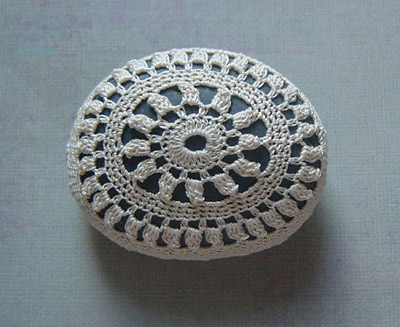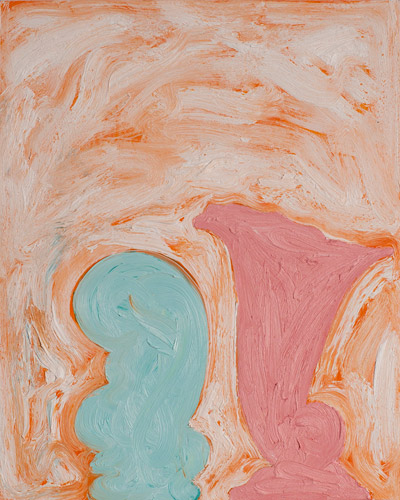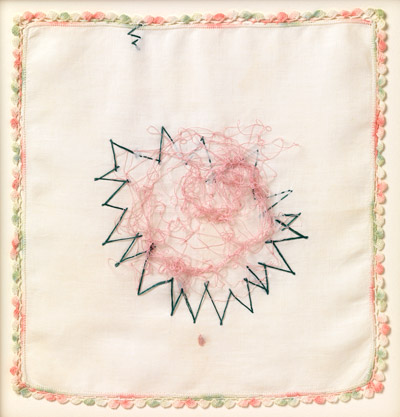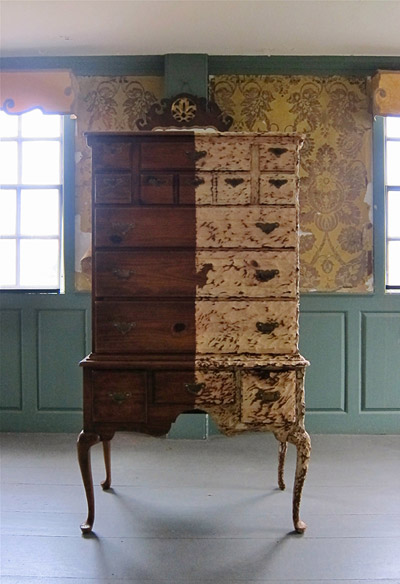Previous Projects |
< back to list |
ParlorWendy Edwards, Jill Slosburg-Ackerman, January 13 - February 25, 2012 Drive-By, 81 Spring Street, Watertown, MA Drive-By is pleased to present Parlor, an exhibition of work by artists Wendy Edwards, Jill Slosburg-Ackerman, Jan Johnson and Monica Johnson, who walk the shaky line dividing the fine and decorative arts. Wendy Edwards' series Holding marks a new phase in her post-abstract work. As with Edwards' floral series Persistent Blooms, this group of paintings addresses contemporary themes via traditional painting subjects. In Arabesque, a pair of sensually curvaceous vases stands together at the bottom of the picture plane. Though painted in pretty candy colors, they conjoin to stoically weather the storm of agitated, peach and white brush strokes surrounding them. Though Edwards' choice of subject matter could have branded the work as decorative, her expressive use of paint and evocative, moody colors reveal a dark energy rumbling just beneath the surface. Jill Slosburg-Ackerman's furniture piece A Divided Highboy stands tall, secure in its schizophrenic appearance. Created for the Wentworth-Coolidge House in Portsmouth, New Hampshire, the piece embodies the divided allegiance of the house's namesake Benning Wentworth. The second-to-last Loyalist Governor of New Hampshire, Wentworth was torn between loyalties to the crown and to the colonials, and forced from office by an angry mob. The concept of a divided allegiance also applies to Slosburg-Ackerman's dual background in jewelry and sculpture, and to her experience in both fine and applied arts. A Divided Highboy is a dramatic visual declaration of Slosburg-Ackerman's hybrid process and aesthetic. Split in half by an invisible line that leaves one side pristine and the other scarred with hand-carved gouges, A Divided Highboy challenges good taste and questions hierarchies as it give us a crash course in the history of art and culture. As is often the case with artists who stitch, Jan Johnson was introduced to needlework by the women in her life: both her grandmothers sewed and embroidered. Johnson's quirky, re-embroidered found linens are at once personal narratives and testaments to her love of the labor of sewing. In Not Pretty, But Incredible, an airy tangle of pink thread is contained inside the outline of a jagged dark green shape that resembles a comic book voice burst. Expecting WOW or BAM, the viewer is surprised by the poignant delicacy of the loopy form within. Like a bright idea, this image occupies the center of the piece, though Johnson also stitches a pink, satiny tear drop below and a pointy dark green shard above. Perhaps she is suggesting that Not Pretty, But Incredible's cryptic message has meaning beyond the boundaries of its crocheted edge. Oklahoma artist Monica Johnson (no relation to Jan) was introduced to stitching by "a very patient mother who learned from her aunt, who learned from her grandmother, and so on and so on." If asked, Johnson might say that her work falls into the category of applied rather than fine arts, though we think her obsessively crocheted stones straddle that line. Ranging in size from pebble to rock, Monica Johnson's Lace Stones marry the minimal perfection of ovoid river stones with the homey geometry of familiar crochet patterns. Her pieces, like Slosburg-Ackerman's furniture sculptures, are hybrids: hard and soft, simple and complex, natural and manmade. Johnson's meticulous workmanship and labor-intensive process imbue her lace-clad stones with the guileless honesty found in folk and outsider art. 
Monica Johnson, Lace Stone, cotton thread and found stone, 2011, 3 x 2 3/8 x 1 1/2" |

Wendy Edwards, Arabesque, 2010, 20 x 16" 
Jan Johnson, Not Pretty, But Incredible, 2011, silk thread on cotton handkerchief, 
Jill Slosburg-Ackerman, Divided Highboy, 2011, carved found furniture, |
